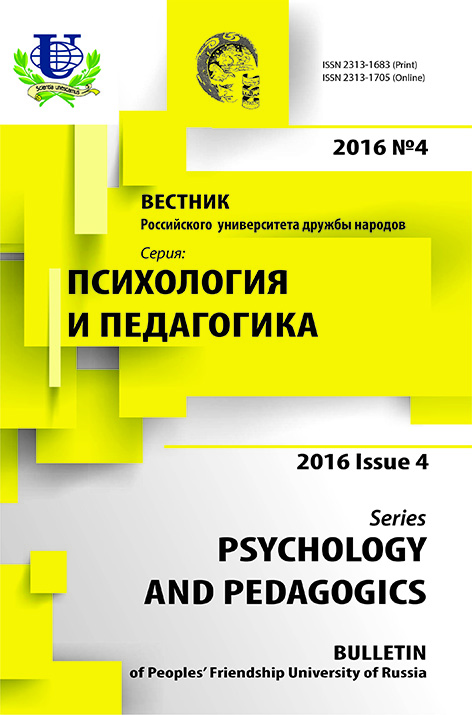FEATURES OF RESPONSIBILITY IN HIGH SCHOOL STUDENTS FROM LARGE AND ONE-CHILD FAMILIES
- Authors: Shurukhina GA1
-
Affiliations:
- M. Akmullah Bashkir State Pedagogical University
- Issue: No 4 (2016)
- Pages: 47-54
- Section: Articles
- URL: https://journals.rudn.ru/psychology-pedagogics/article/view/15109
Cite item
Full Text
Abstract
The results of the study of the responsibility in high school students of early adolescent age from one-child families and families with many children are submitted in the article. The study was performed in line with the systemic-functional approach developed by A.I. Krupnov. In the context of the approach, the responsibility is considered as the most important volitional moral property that includes a number of conceptual-semantic and instrumental-stylistic components. The results of the study reveal statistically significant differences in 11 characteristics (socially significant purposes, sociocentricity, egocentricity, consciousness, awareness, initiative, willpower, internality, operational difficulties). The responsibilityin students from one-child families is characterized by a higher level of both public and personal oriented motivation, deep understanding of its content, high performance in object-active and subject- communicative spheres. Only children are more passive in demonstration of the responsibility, but show more intensive emotional reaction in its successful implementation. Such children are more careful when they give promises or take obligations, as they tend to experience external difficulties in manifestation of this personality trait. The responsibility in students from large families is, to a greater extent, community oriented. Their knowledge about this personality trait is larger in scale. These children are more active in implementing responsibility and take its successful implementation easier, they also cope better with external difficulties in manifestation of the responsibility.
About the authors
G A Shurukhina
M. Akmullah Bashkir State Pedagogical UniversityChernyshevsky str., 25a, Ufa, Russia, 450077
References















